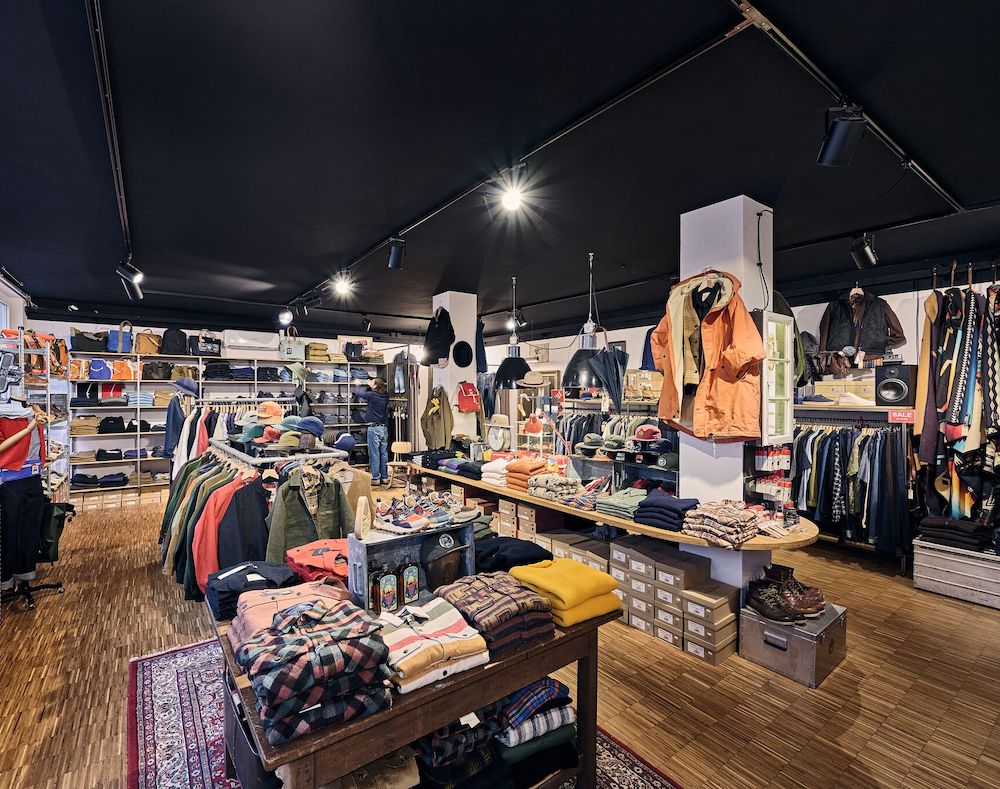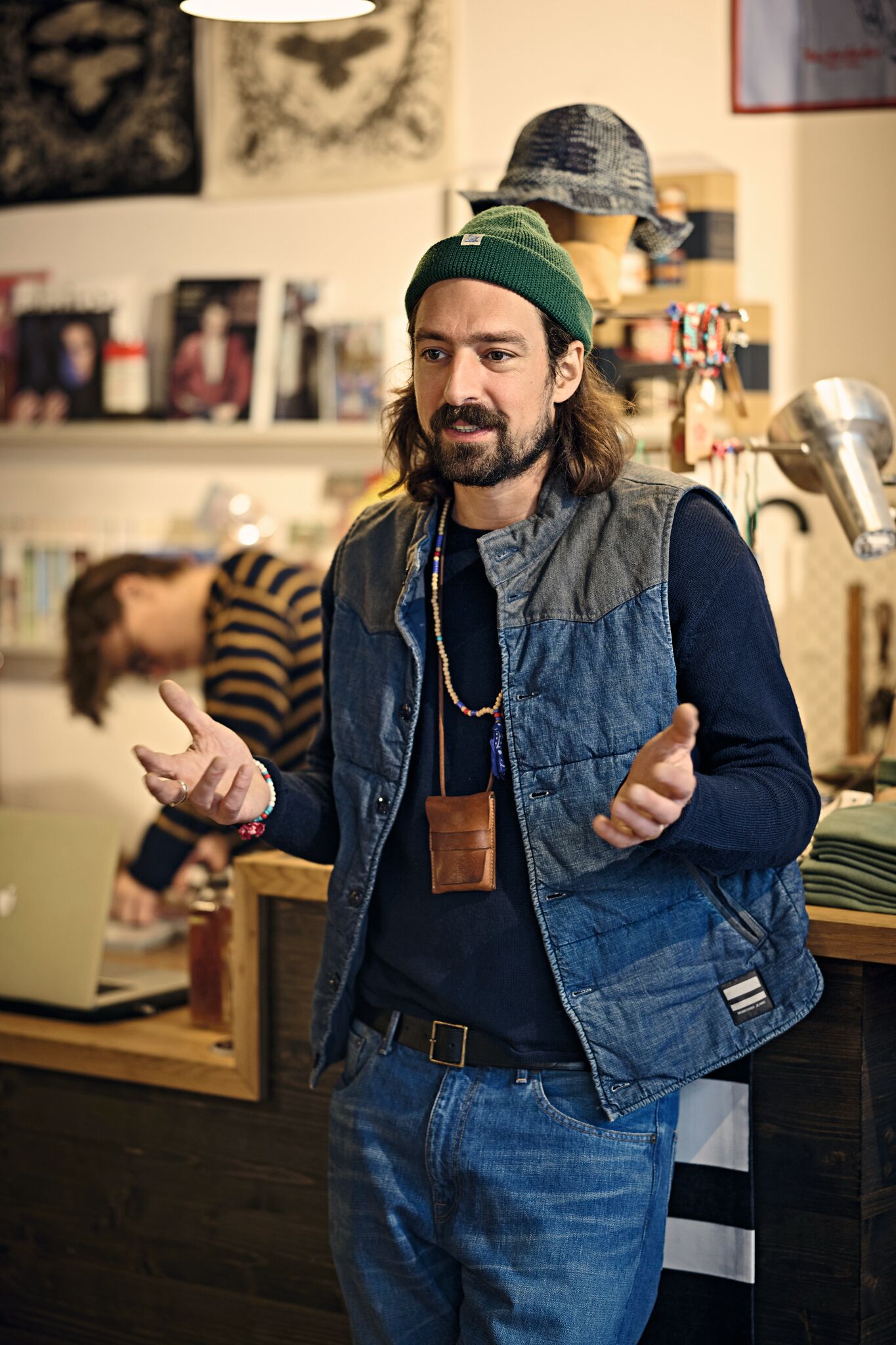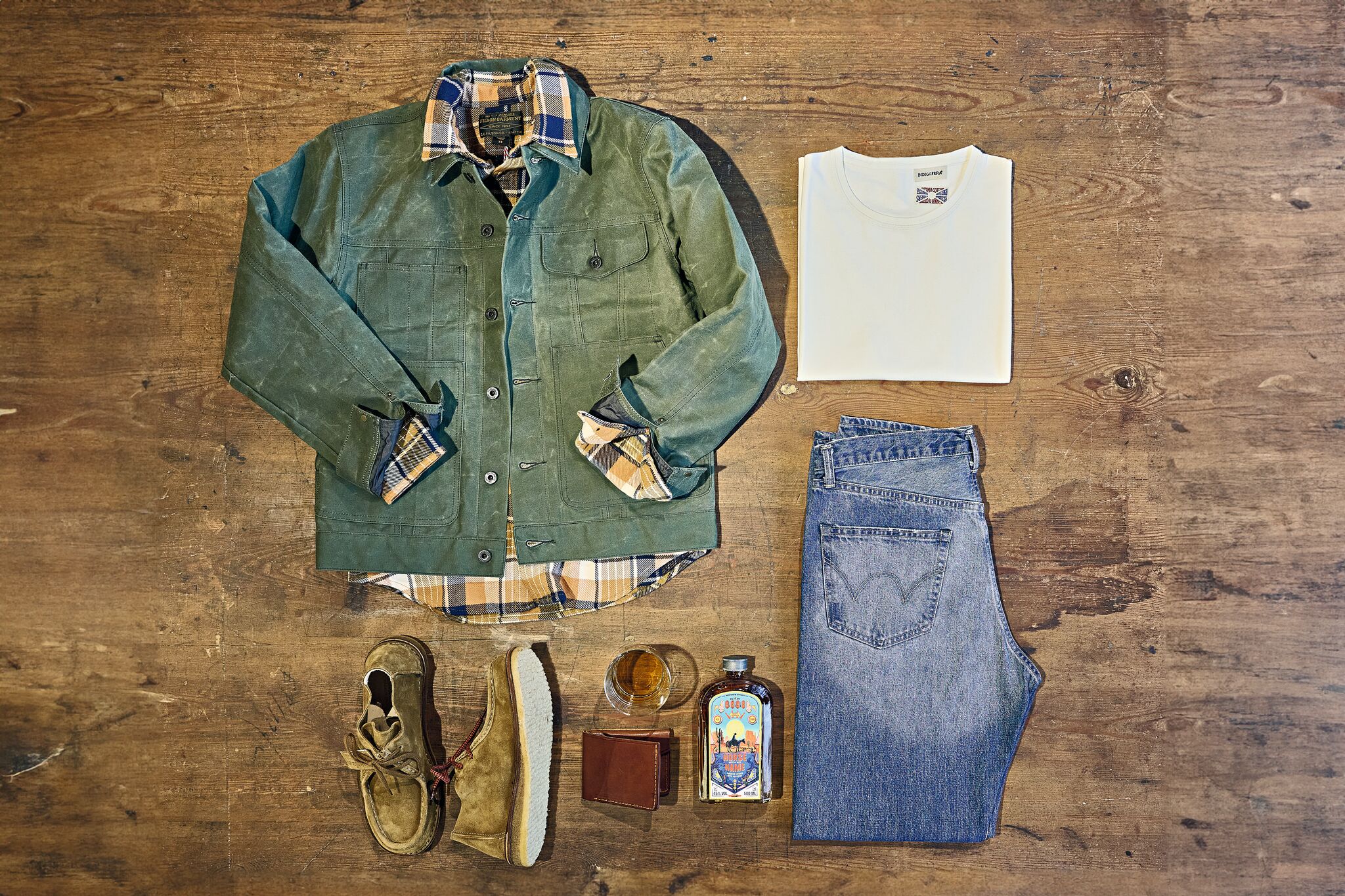Anyone who wants to know everything there is to know about denim should pay a visit to -Sebastian Stoll at his store Ciao Ragazzi in Stuttgart. We did. Among other things, he told us what he thinks of the rule that you shouldn’t wash a new pair of jeans for the first six months.
Spoiler alert: it’s total nonsense.

SEBASTIAN STOLL is a native of Germany’s Black Forest region. He trained as an electronics technician and spent seven years working at a textile research institute before opening his own store. You can find Ciao Ragazzi Quality Department at Rotebühlstraße 59a in Stuttgart and online at ciaoragazzistore.com.
Before you opened your store, you spent many years working at a textile research institute. What’s the story behind that?
I actually trained to be an electronics technician and ended up in the textile business in a roundabout way. At the institute, I was working in the Smart Textiles department. Smart textiles are textiles that have a function, like measuring heart rate, respiration or body temperature. I was responsible for creating these textiles in the lab, though at the time I was already interested in jeans as well. And the institute gave me the chance to learn exactly how jeans are made. The seven years that I worked there were a great opportunity to build up some background knowledge in textile manufacturing.

What makes denim so special?
I guess that would be the indigo dye, which is dark blue at first in all jeans. But after they’ve been worn and washed a few times, the color becomes lighter – unless the manufacturer washes them for you. Most of the jeans that you can buy these days are prewashed, so they’re already lighter than they would be. Prewashing is actually just an attempt to create the look that results from use.

Some so-called experts say you shouldn’t wash your jeans for six months after you buy them. Sound advice or nonsense?
That’s a total myth, if you ask me. There are absolutely no -benefits to not washing your jeans. Okay, maybe you get a little more contrast as far as the stripes are concerned, but that’s it. Personally, I find wearing a new pair of stiff jeans uncomfortable. The stiffness is a necessary part of the weaving process, but later it has no relevance. I always wash a new pair of jeans before I wear them. Just once I waited six months before washing a new pair of jeans – and then I did it by hand in the tub. The result was a blue bathtub. Ever since, my jeans immediately go into the washing machine after I buy them.
Is there anything you should look out for when washing your jeans?
The most important thing is to keep the spin speed as low as possible, say around four hundred revolutions. That’s because the colors can bleed in the washing machine. And the more color there still is in the fabric, the more likely it will be washed out, creating streaks that look relatively unattractive. I recommend setting the temperature to thirty degrees, and I would definitely turn the jeans inside out to avoid abrasion caused by the drum. Also, you should wash a new pair of jeans by themselves the first ten times. But the spin speed is really the be-all and end-all of washing your jeans. Otherwise, you can’t really go wrong. As far as detergent is concerned, I use a completely normal run-of-the-mill product.

Do people know a lot about denim already when they come to your store?
I’ve seen people know more and more about jeans in the six years that I’ve had the store. The topic of washing jeans is one of those things, because a lot of people think they shouldn’t put their new, stiff jeans in the washing machine – and they don’t like what I have to tell them about it. I then always show them a pair of jeans from my kids that have been worn and washed several times. And the original fabric for comparison. That is always cause for surprise, because nobody believes that denim can really become so light. As far as expertise is concerned, it really isn’t that important. And I can usually figure out what a customer wants and needs.
What criteria do you use to select the brands for your store?
As a consumer, you can buy whatever brand you want and try everything out, but as a shop owner I have to find brands that fit in terms of image and products. Sometimes there’s a company I’ve heard of for a long time and I realize that now the time is ripe. There are brands out there that you would like to have, but you know they might not sell so well at that moment. So, ultimately, it’s more of a feeling whether a label fits or not.

What’s your favorite brand at the moment?
Right now, I think Kardo is a really strong brand. We’ve had them in our program since the fall. It’s an Indian brand, and India has a very rich tradition of craftsmanship. We also have some chinos from Kardo made of hand-woven denim that comes from a family-run weaving mill that has been around for ages. On top of it all, Kardo pays its workers fair wages. It’s very interesting what they do.

What other brands do you carry?
Probably our most important brand is Red Wing. A unique selling proposition for the boots is that there are few others who offer the same quality in that price segment. Then there’s Indigofera Jeans, which is a Swedish label, as well as Baracuta, Filson or Momotaro Jeans. Momotarō, which literally means “Peach Boy”, is the name of a popular hero from Japanese -folklore.
What are the hallmarks of a good brand for you?
Quality is always the most important thing, but so is the personal contact. We carry almost exclusively small brands and almost always know the owners personally. That quickly gives us a feeling for how we can work together. If you hit it off right from the start, that’s the best.
What makes your store different from others?
Besides the quality, the fact that we carry small labels that you often won’t find anywhere else in the area.

And you can’t shop for jeans online.
Exactly. Jeans should be bought according to the cut. A pair that fits one person may not fit another. You have to try them on. And sometimes you need to try out five or six different cuts until you find the right one for you.
You’ve already mentioned quality several times in our -interview, which also touches on the topic of -sustainability . . .
The quality of a piece of clothing depends on the fabric. And good, high-quality fabrics are expensive, which means that the big labels tend to steer clear of them and try to find cheap -alternatives. If you ask me, high quality is highly sustainable. Of course it’s good that there are eco-labels out there, but if a pair of environmentally friendly jeans wears out too quickly, then you can’t really call that sustainable. In my opinion, the most sustainable things are long-lasting and durable, if only because you take better care of them. People are also more likely to have things repaired if they become favorites.
Interview: Wiebke Brauer
Photos: Steffen Jahn
ramp #63 Happy on the Road

Happy on the road? You bet. For any respectable car culture magazine, after all, being happy on the road is a mandatory prerequisite. Over time, and with a little bit of luck (which is, after all, a close relative of happiness), these feelings cheerfully blossom into an emotional foundation that … . Find out more










